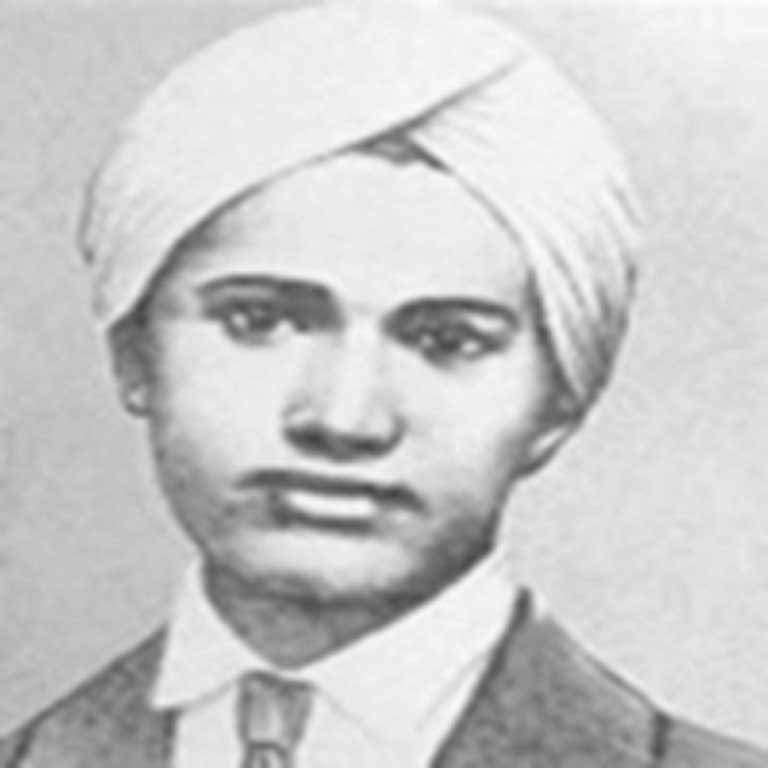(Liberation pays tribute to Shaheed Kartar Singh Sarabha, the Ghadar movement hero martyred on 16 November 2015.)

Kartar Singh Sarabha was 19 when he was executed by the British colonial Raj on 16 November 2015. But his afterlife was a long one if his life was short. Sarabha’s legacy inspired Bhagat Singh, who used to carry a photo of Sarabha in his pocket at all times. Sarabha and the Ghadar movement were the living link between the 1857 First War of Independence; the Russian Revolution; and Bhagat Singh’s generation of revolutionaries.
Kartar Singh Sarabha Grewal was born on 24 May 1896 in Sarabha village, Ludhiana district, Punjab. He was schooled in Ludhiana and did his final year of schooling in Ravenshaw College, Cuttack, Odisha. He sailed to America in 1912 for higher studies, at the age of 15. Soon, the teenager was radicalized by the Indian expatriate working class and students to join the Ghadar movement, which was committed to an armed struggle to recreate the 1857 ‘Ghadar’ (Revolt) to free India from colonial rule. Professor Chaman Lal writes: “In a life of 19 years, and a political life of only 4 years, Kartar Singh Sarabha set such a glowing example of the struggle for India’s independence, as is very rare to obtain. Sarabha had reached America on the 1st of January, 1912 and attained political consciousness within a period of five or six months. After the founding of the Ghadar Party on the 21st of April, 1913, and especially after the publication of ‘Ghadar’ on the 1st of November, 1913, every moment of his life, every drop of his blood was dedicated to the service to his nation…The newspaper ‘Ghadar’ was brought out from the Ghadar Party office, ‘Yugantar Ashram’ and Kartar Singh Sarabha and Raghuvar Dyal Gupta, along with Lala Hardayal played a key role in this.”
The Ghadar party, with its origins among Indian migrant workers, was marked from the beginning by its revolutionary orientation. Lala Hardayal, who had served as Secretary of the San Francisco branch of the Industrial Workers of the World, was probably the first Indian to write an article on Karl Marx (published in the Modern Review, Calcutta, in March 1912). The Ghadarites were imbued with a broad internationalist outlook, drawing inspiration from Irish, Mexican and Russian as well as Indian revolutionaries. A March 19,1917 issue of Ghadar proclaimed in bold letters “RUSSIA HAS BECOME FREE, SOON INDIA WILL BE FREE”, following the fall of the Czarist regime in Russia and the beginning of the revolution there. Many of the Ghadar leaders later became communist organizers (one of them, Baba Bujha Singh, joined the Naxalbari movement in 1967, and was arrested and killed in a fake encounter on July 28, 1970.)
They were also united by a strong, principled anti-communal secularism. Among the leaders and martyrs of the Ghadar movement there were Sikhs, Muslims and Hindus from different regions of India. As Sohan Singh Bhakna, who would later become an important leader of the Communist Party of India, said later, “We were not Sikhs or Punjabis. Our religion was patriotism.” The same feeling was expressed by the young Abdullah, one of the rebel sepoys executed in Ambala, who when lured by the authorities to betray his kafir (non-Muslim) comrades, retorted: “It is with these men alone that the gates of heaven shall open to me.”
It was these ideals that moved Kartar Singh Sarabha. When the Ghadar leaders who sailed to India to hoping to wage and win a revolutionary war were arrested, Kartar Singh Sarabha himself took on leadership at the age of 18.
According to Professor Chaman Lal, Kartar Singh Sarabha was betrayed by a police informer. He was reciting poems from Ghadar ki Goonj to to the people gathered in the house, when the police arrived there and arrested him and his comrades. They bravely kept singing revolutionary poems even in captivity. Sarabha was sentenced to death and executed with six other Ghadrites.
Professor Chaman Lal writes: “Kartar Singh Sarabha became Bhagat Singh’s hero from childhood, when he had visited their home and Bhagat Singh’s father Kishan Singh gave one thousand rupees fund to Ghadar party. Bhagat Singh always used to keep Sarabha’s photo in his pocket and Naujwan Bharat Sabha established by Bhagat Singh and Comrades will always begin their slide show or revolutionary heroes after garlanding Sarabha’s photograph on dais.”
